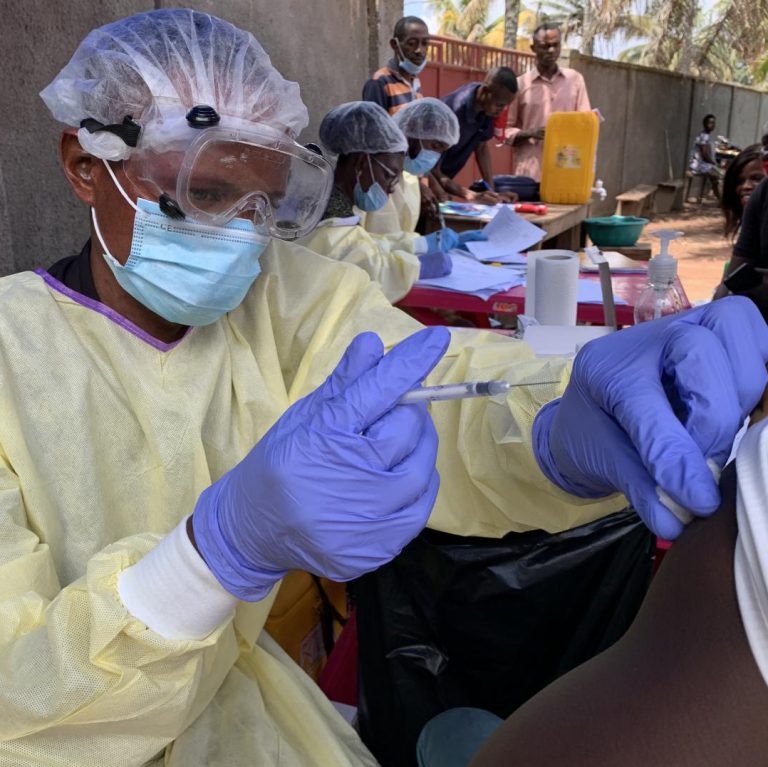U.S. Preventive Services Task Force recommended that all women get screened for breast cancer every other year starting at age 40
On May 9, 2023, the U.S. Preventive Services Task Force (USPSTF) recommended that all women get screened for…

On May 9, 2023, the U.S. Preventive Services Task Force (USPSTF) recommended that all women get screened for…

On May 3, 2023, National Institutes of Health (NIH) scientists announced that they had uncovered new details on…

On May 1, 2023, an Oregon Health Sciences University (OHSU) dermatologist and a multi-disciplinary team confirmed that a…

On Apr. 27, 2023, the Zoonomia Project team announced in in a special issue of Science, that had…

On Apr. 18, 2023, the U.S. Preventive Services Task Force (USPSTF) published a final recommendation statement on screening…

On Apr. 17, 2023, a new initiative led by Jennifer Doudna and Jill Banfield at the Innovative Genomics…

On Apr. 13, 2023, in an enormous leap forward in the understanding of Parkinson’s disease (PD), researchers announced…

On Apr. 11, 2023, a National Institutes of Health (NIH) clinical trial was stopped early because a daily…

On Apr. 7, 2023, the U.S. National Park Service reported Highly Pathogenic Avian Influenza (HPAI) had been confirmed…

On Mar. 9, 2023, the U.S. Food and Drug Administration (FDA) announced that it had published updates to…

On Feb. 14, 2023, the Pacific Economic Development Agency of Canada (PacifiCan), announced $14.5 million in funding for…

On Feb. 3, 2023, the World Health Organization (WHO) released an updated Global Breast Cancer Initiative (GBCI) Framework…

On Feb. 2, 2023, a National Institutes of Health research group with extensive experience studying ebolavirus countermeasures successfully…

On Jan. 31, 2023, a team of researchers led by the Innovation Center for Neurological Disorders and Department…

On Jan. 25, 2023, it was reported that adults living in rural areas of the United States have…

Our Milestones in CRISPR cartoon illustrates several significant achievements in the development of the technology with commentary by…

On Jan. 11, 2023, Uganda declared the end of the Ebola disease outbreak caused by Sudan ebolavirus, less…

On Jan. 6, 2023, the U.S. Food and Drug Administration (FDA) approved Leqembi (lecanemab-irmb) via the Accelerated Approval…

On Jan. 4, 2023, an international research group announced it had for the first time reconstructed ancestors dating…

Milestones in Polio illustrates the slow but steady advancements from its clinical description and discovery to widespread infection…

On Dec. 10, 2022, CSL announced data affirming the long-term durability and safety of single-infusion HEMGENIX® (etranacogene dezaparvovec-drlb)…

On Nov. 22, 2022, the U.S. Food and Drug Administration approved the investigational gene therapy etranacogene dezaparvovec or…

On Nov. 17, 2022, the U.S. Food and Drug Administration (FDA) approved Tzield (teplizumab-mzwv) injection to delay the…

On Nov. 16, 2022, researchers at the National Institutes of Health (NIH) announced they had successfully identified differences…

On Nov. 1, 2022, the National Institutes of Health (NIH) announced that adults with hypertension saw a small,…

On Oct. 27, 2022, the National Institutes of Health (NIH) announced that overall cancer death rates continued to…

On Oct. 26, 2022, the Barbara Ann Karmanos Cancer Institute announced it had completed an over 50,000-square-foot expansion…

On Oct. 15, 2022, scientists reported that DNA evidence showed that the plague infection was endemic in the…

On Sept. 29, 2022, the World Health Organization announced that it had identified the spread of Anopheles stephensi…

On Sept. 27, 2022, the National Institutes of Health (NIH) announced it had launched a program to better…